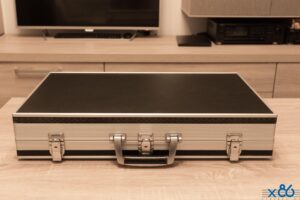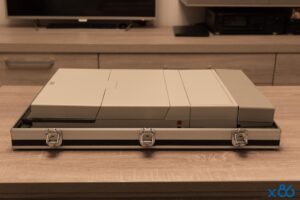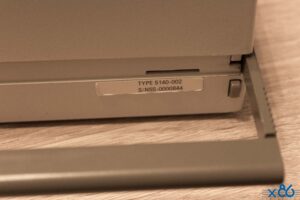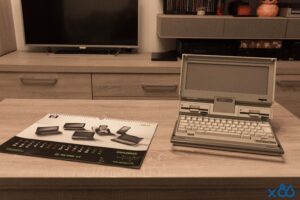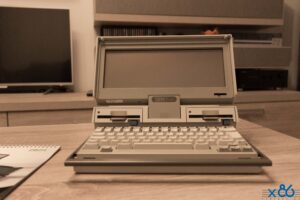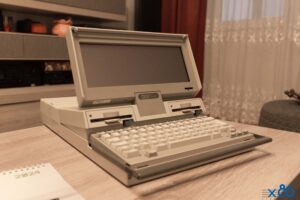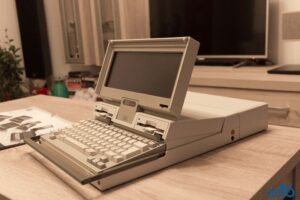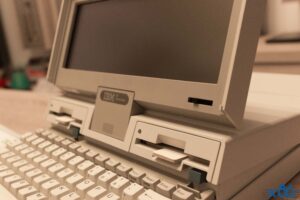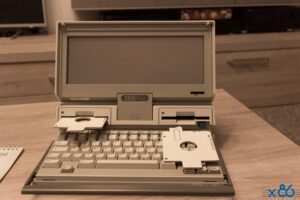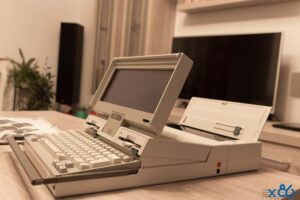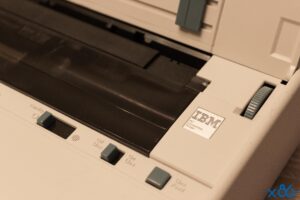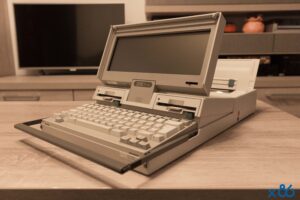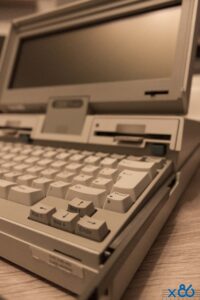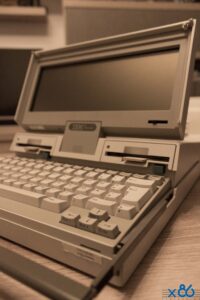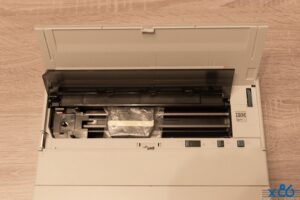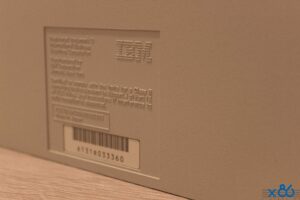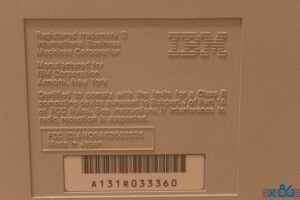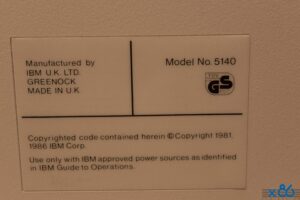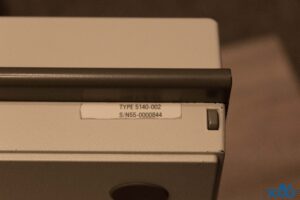Year: 1986
Retail Price: US$2,000 (equivalent to $5,340 in 2022)
This is IBM’s first laptop. The grandaddy of Lenovo!
The IBM PC Convertible (model 5140) from 1986 was IBM’s first laptop-style computer, following the luggable IBM Portable, and introduced the 3½-inch floppy disk format to the IBM product line.
The CPU is an Intel 80C88, the CMOS version of the Intel 8088CPU. The base configuration included 256 KB of RAM, expandable to 640 KB, dual 720 KB 3.5-inch floppy drives, and a monochrome, CGA-compatible LCD screen. It weighed just over 12 pounds and featured a built-in carrying handle, with a battery rated for 10 hours (4 hours in the backlit Model 3).
The first model was introduced at a price of $1,995, the Model 2 at $1,395 with 256K of RAM and $1,900 with 640K, and the Model 3 at $1,695 with 256K of RAM.
The LCD screen displayed 80 × 25 characters, but has a very wide aspect ratio, so text characters and graphics are compressed vertically, appearing half their normal height. The display is capable of 80 × 25 text and graphics modes of 640 × 200 and 320 × 200 pixels.
The PC Convertible has expansion capabilities through a proprietary ISA-based port on the rear of the machine. Extension modules, including a small printer and a video output module, were provided as plastic modules that snap into place. The machine can also take an internal modem, but has no room for an internal hard disk. The concept and the design of the body was made by German industrial designer Richard Sapper.
Pressing the power button on the computer does not turn it off, but puts the machine into “suspend” mode, which will hold the machine’s state as long as battery power lasts, to save on boot time. The CMOS 80C88 CPU has a static core, which holds its state indefinitely by stopping the system clock oscillator, and can resume processing when the clock signal is restarted as long as it is kept powered. The system RAM in the Convertible is SRAM rather than DRAM, both for lower power consumption and less circuitry to fit into the cramped laptop case.
Pressing a lever between the two floppy drives just below the display detaches the entire screen from the unit. This feature allows the use of a full-size desktop monitor while at one’s desk, an early forerunner of the “docking station” concept, and similar to Apple’s PowerBook Duo.
The computer even has a printer that can be attached so you cant really notice if its build in or not.
The concept and the design of the body was made by German industrial designer Richard Sapper. He is considered one of the most influential designers of his generation.
The computer can be also seen at the Science Museum & Natural History Museum, London.
This computer having series “55-0000844” belonged to Ing. Ernst Hemelmayr, known to be one of the best civil engineers from Europe. Its strange how life suddently ends and your posesions end up in someone else’s hands or worse, in the trash bin. The person I bought this computer from said the house needed to be empty out so the children of Mr. Ernst could sale it faster. If you knew Ing. Ernst Hemelmayr, please comment below. I am curios how did this machine survived absolutly in mint condition.

